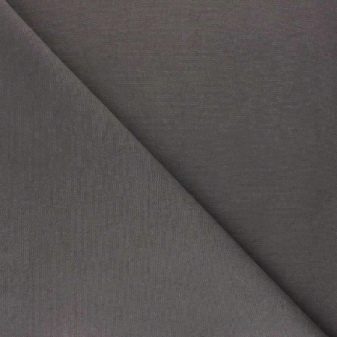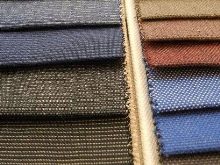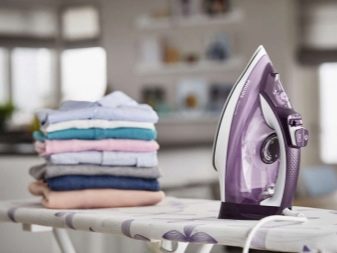What is dralon and how to care for the fabric?

Many modern synthetic materials are not inferior in performance to natural counterparts. Some even surpass them. This is exactly what the dralon belongs to. Practicality, unpretentiousness in care and excellent appearance are not all the advantages of this fabric. Let's consider its features in more detail.


What it is?
Dralon is the name given to a synthetic fabric obtained by chemical means. The material is distinguished by its high density, pleasant texture and a variety of shades. Despite the monotony of such canvases, they look very dignified.
Manufacturing features
The technology for obtaining this material was developed by the German company Bayer Textilfaser. The basis is taken from hydrocarbon raw materials. Strong heat and simultaneous chemical treatment allow the creation of thin, but very strong acrylic filaments. The resulting fibers are dyed and dried. They are then woven together using a loom. To improve the quality of the fabric, they are reheated and impregnated with a special Teflon compound.
This treatment increases the strength, durability and resistance of the fabric to moisture and dirt.


Pros and cons of the material
Since during the development of the technology the task was to obtain a fabric with improved characteristics, it has many advantages:
- texture pleasant to the touch and hypoallergenic (the likelihood of skin irritation upon contact with the canvas is minimized);
- breathability and antibacteriality (the material does not favor the reproduction of dust mites, molds, moths, etc.);
- lack of tendency to deformations and deterioration of appearance (the fabric does not shrink during washing, does not stretch due to mechanical stress, does not fade in the sun);
- resistance to water, acids, weakly alkaline solutions, organic solvents and household pollution;
- thermoregulation (the ability to retain the heat of the human body without accumulating static electricity).
There are few disadvantages of the material:
- high price;
- destruction on contact with phenol and formalin;
- the need for regular cleaning (soft texture tends to attract and accumulate dust, which must be removed periodically).



Application
This fabric is widely used both independently and in combination with other materials. For example, dralon fibers can be combined with wool, cotton, linen. The result is blended formulations suitable for a variety of purposes. Dralon is used to make:
- awnings and tourist tents;
- upholstery and covers for urban and garden furniture;
- home decor (bedspreads, curtains, decorative pillowcases);
- underwear, children's and adult clothing;
- toys, patches for backpacks and bags, etc.
Most often, this material is used in furniture production, as well as to create structures that protect against rain and wind. Its qualities are ideal for the manufacture of durable, resistant to any impact products.
Other uses usually involve combining different fabrics to achieve the desired performance.


Care rules
Dralon does not require special treatment. It is easy to clean and maintains a decent appearance with simple maintenance. Nevertheless, it is worth following some recommendations in order to maximize the life of products made from this fabric. First, consider the features of hand or machine wash (both options are allowed).
- The water temperature should not exceed 30 degrees.
- It is better to wash the material separately from other types of fabrics.
- A gentle or standard spin in the washing machine is possible.
- Drying of the product is carried out in the straightened form in the fresh air. The tumble dryer is not recommended.
- Ironing is carried out through a damp cloth in the "nylon" mode.


Professional dry cleaning is another great way to keep your Dralon products in top condition. If this method is not feasible either (for example, if you need to clean a sofa with a non-removable cover), you can use a vacuum cleaner or a damp sponge. If a stain appears, you can try to eliminate it on your own. To do this, it is enough to treat the contaminated area with warm soapy water. As an improvised tool, you can use a cotton pad, a piece of cloth or foam rubber. If the stain has moved away, it is enough to remove soap residues from the treated area by wiping it with clean water.
So it is obvious that Dralon is an excellent material in all respects... A product made from it can delight its owner for a long time with a magnificent appearance and quality, regardless of the conditions of use and the impact of negative external factors. At the same time, the fabric does not require special gentle care and does not cause unnecessary trouble.
It is not surprising that many companies include it in the list of the most frequently used materials in production, and buyers prefer products from it.










